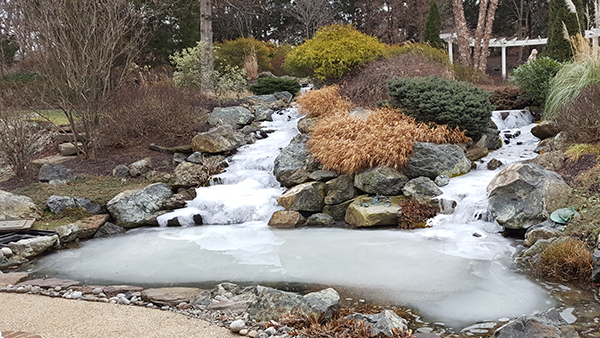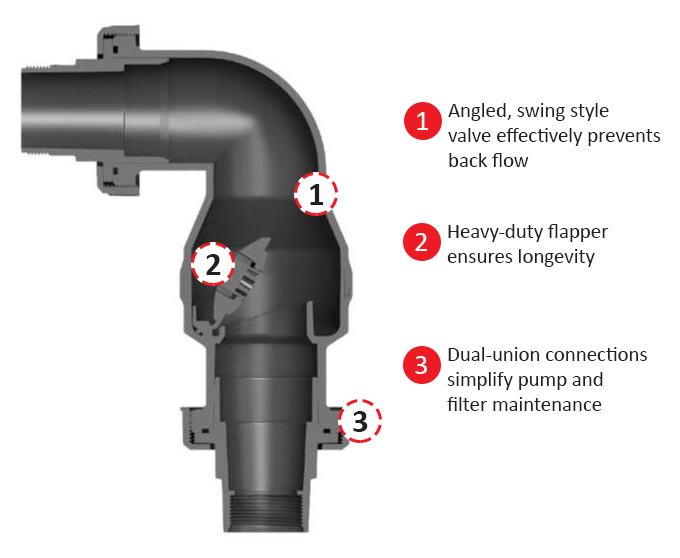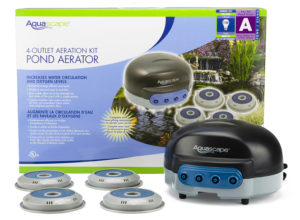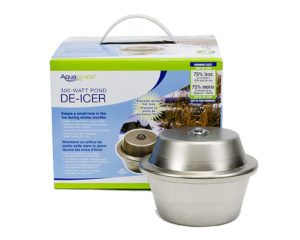With cold weather approaching there are a few maintenance changes that every pond owner should keep in mind. It may sound like there is a lot more work during the winter, but there really isn’t. There will simply be a different way to maintain your pond during the approaching colder months that, if done correctly, will give you a nearly maintenance free winter.

Pumps and Plumbing
The first decision to make is, whether you will turn the pond off for the winter or leave the pumps running. The question revolves around ice forming on the waterfall(s), which is always a possibility depending on how the waterfalls are constructed and how cold the winter is.
You’ll want to consider if:
- You will be going on a long vacation over winter or for some reason won’t be able to keep an eye on the pond every day?
- Do you have fish that you couldn’t stand to lose?
If your answer is “yes” to either of these questions, then you may want to shut down the pond for the winter.
To begin you’ll need to disconnect the pump and check valve. Taking the pump and check valve out of the pond protects the pump from freezing and also drains the water out of the plumbing in most cases. Your pond may be different and may require different tactics to properly empty the water from the plumbing, but the goal remains the same: get the water out.

Installing a pond deicer (heater) will keep a hole open in the ice for waste gases from the fish to escape through, which keeps the fish healthy. An aerator can also be effective, please note that the aerator must be placed at least 12 inches above the bottom of the pond. Otherwise the aerator will circulate all the warmer water on the bottom of the pond to the top leaving nowhere for the fish to keep warm.


Important step: If your pond is equipped with an auto-fill, a small water line running from a faucet to a water level valve in the pond, remove it from the faucet and blow the water out of it. Lift the valve inside the water feature to allow the water to escape. This will probably require two people, one to lift the float and the other to blow out the line.
Stop Feeding Your Fish When it Gets Cold
Fish will start to slow down and stop digesting food when the water temperature dips below sixty. While the temperatures fluctuate from the mid-to upper 50’s only feed the fish two to three times per week. After the temperatures drop below fifty consistently stop feeding the fish all together because they won’t be able to digest it properly.
Do not start feeding the fish again until the water temperature has risen above sixty for longer than a week just to be safe. There may be a warm day here and there when the fish “beg” for food. Feeding them when the temperature is not consistently above the fifties can create a situation where the food decays inside their stomach instead of being digested.
Power Outages Affecting your Pond’s Health
Winter brings a high probability of power outages and these can greatly affect your pond. If you keep your pump running and the power goes out for an extended period, especially during a cold snow storm, ice will have time to damage or destroy parts of the pump, check valve, or plumbing.
If you have an aerator or deicer installed, experiencing an extended power outage can allow ice to completely cover the pond. So, keep an eye on your pond and the power, and have a plan for when the power goes out.
My Pond Is Completely Frozen Over, Now What?
A pond can be completely frozen, with a thin layer of ice, for a couple of days before the fish will be affected. If this happens to your pond, DO NOT, I repeat, DO NOT grab a hammer and chisel and begin smashing the ice. This will stress the fish causing more trauma than they are already experiencing. Instead use hot water to melt a hole in the ice so the gases can escape. Learn more about what to do with a frozen pond HERE.
My Net is Drooping with Snow
Often the debris net can be left on the pond through the winter, however during a heavy snow it can become laden with snow and ice. The extra weight can cause the net to droop into the pond and the stakes to bend or possibly break. If this happens simply wait for the snow and ice melt and then straighten up the stakes. You can also have the net taken off of the pond after autumn is over to hopefully dodge any large snow storms that might damage it.
Learn more about our Winter Maintenance services below.








